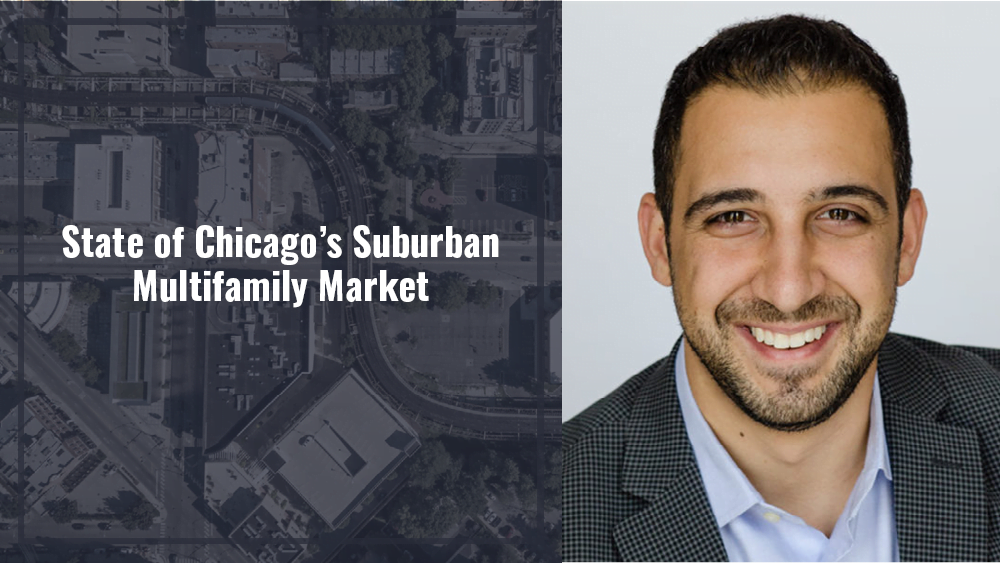12.21.20
State of Chicago’s Suburban Multifamily Market

As we close out 2020, here’s my assessments of Chicago’s suburban multifamily market. Transaction volumes across the Chicagoland area have all been impacted by the pandemic differently. While multifamily transactions are happening throughout Chicagoland, there has been more of a slow down. As we deal with shifts in the real estate market due to COVID, I think that we’re going to see more interest in suburban multifamily, particularly in the collar counties (outside of Cook). Cook County property tax volatility is a limiting factor that has some buyer groups focusing their attention away from Cook County. Having worked most recently on Will and Lake County deals, we see very competitive processes with multiple offers. Overall, key investment parameters are there: interest rates remain low, and P&I escrow reserves are being reduced by Fannie & Freddie.
To take a closer look at each county, here is a snapshot of DuPage, Lake and Will counties multifamily markets.
DuPage County
DuPage County is probably the single most mentioned county by investors looking to buy outside of Cook County. However, 2020 year-to-date transaction volumes of buildings with 10+ units are half what they were in 2019 (22 YTD vs. 46 in 2019). Perhaps more striking than the reduction to sales is total dollar sales volume. Comparing cumulative sales volume January 2019 – November 2019 to January 2020 – November 2020 was $549.6M to $113.6M, respectively.
Lake County
Lake County, by way of comparison, also saw a slow down in transaction volume. However, there were 35.4% less transactions for multifamily buildings with 10+ units in Lake County year-to-date, compared to a 52.2% reduction in DuPage. Lake County in 2019 had 31 transactions versus 20 transactions this year. Comparing the cumulative sales volume in 2019 to 2020 (January to November) was $214.8M to $93.8M.
Will County
According to CoStar data, Will County has a fraction of the number of buildings as DuPage or Lake counties and a fraction of the number of transactions as well. There’s been about one-third of the transactions in Will County for apartments with 10+ units so far this year compared to 2019 (15 in 2019 vs. 5 in 2020 YTD).
According to CNBC, one notable trend is that the cost of living has gone down in Will County by 3% with the cost of groceries down 7.7% and housing down 4.5%. Known as a commuter suburb, the area is fast growing with many local amenities, including music venues and two casinos.
Analysis
While I think that COVID has clearly had a profound impact on transaction volume in suburban Chicagoland, I anticipate a return to normal as the pandemic begins to move behind us. I think a big take away from this high-level look is that Lake County should be top of mind for investors. If you would like to talk further about the suburban multifamily market, give me a call at 773-293-5095.
Chicago’s suburban multifamily
